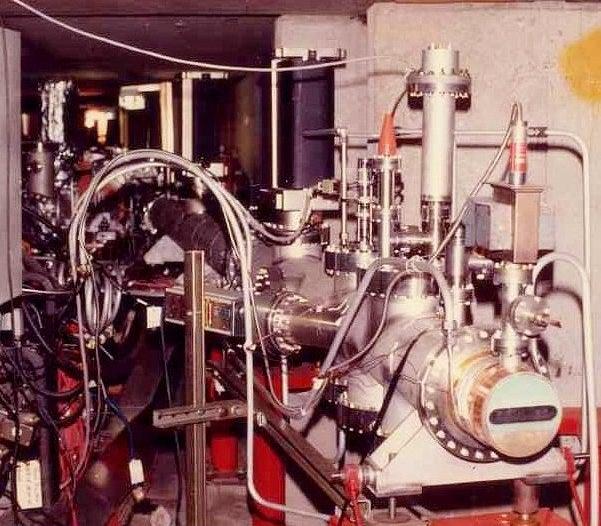SPEAR-heading X-ray Science for 40 Years
Last Saturday marked the 40th anniversary of an historic event: In 1973, a team of research pioneers extracted hard X-rays for the first time from SLAC's SPEAR accelerator.
By Manuel Gnida
Last Saturday marked the 40th anniversary of an historic event: In 1973, a team of research pioneers extracted hard X-rays for the first time from SLAC's SPEAR accelerator. Like X-rays from an X-ray tube, the radiation generated by SPEAR can deeply penetrate a large variety of materials and probe their inner structures. However, SPEAR's X-rays are significantly more intense and unlock the possibility for brand new science.
Forty years later, SPEAR has matured into SPEAR3 and is running stronger than ever, providing X-rays to SLAC's Stanford Synchrotron Radiation Lightsource (SSRL). And accelerator-based X-ray research at more than 60 facilities around the world has led to numerous breakthroughs in the materials, life, environmental and other sciences.
SPEAR was originally built for electron-positron collisions, from which particle physicists gained insights into nature's fundamental particles and forces. However, it was quickly realized that particle racetracks like SPEAR also produce a byproduct called synchrotron radiation – an intense light with a large spectral range that includes X-rays. Consequently, in 1968, SLAC’s Burton Richter and Wolfgang "Pief" Panofsky granted Stanford University researcher William Spicer's request to consider the possibility of using SPEAR's X-rays for experiments, and added a tangential spout to the accelerator's design as an outlet for this synchrotron radiation.
In a pilot project, Stanford University scientists Sebastian Doniach, Ingolf Lindau, Piero Pianetta and William Spicer led the effort to design the first hard X-ray beamline to exploit SPEAR's radiation. The beamline, funded by Stanford's Center for Materials Research and the National Science Foundation (NSF), originally consisted of a vacuum valve on SPEAR and a chamber to extract the radiation through a thin beryllium window. The synchrotron light was imaged with a fluorescent screen.
After a flurry of activity by SLAC's Technical Division to fabricate and install the beamline, on July 6, 1973, the researchers were ready to unleash SPEAR's synchrotron radiation power. Not knowing exactly what to expect, the researchers slowly opened the mask that was designed to intercept the radiation emerging from SPEAR. "When we saw the first light on the fluorescent screen, everybody in the control room cheered," Pianetta recalls. "We proved that we were able to get the X-rays out and align them properly in our setup."
Four months later, the researchers had added more equipment to their setup and performed the first X-ray experiment at SPEAR. "We learned a lot in the months leading up to the first experiment," says Lindau. "We noticed, for example, that the X-ray beam was slowly disappearing because SPEAR's particle beam moved around." This observation led to the development of the first beam steering for X-ray light sources.
Based on the successful pilot project, the decision was made to build five experimental stations for the newly founded Stanford Synchrotron Radiation Project (SSRP), whose construction was led by Herman Winick and SSRP's first director Sebastian Doniach. Funding was obtained from the NSF and other partners. SSRP developed into the Stanford Synchrotron Radiation Laboratory, which is now called the Stanford Synchrotron Radiation Lightsource (SSRL).
With more than 30 experimental stations, approximately 1,600 users annually and more than 450 journal publications in 2012, SSRL continues to lead X-ray science.
Contact
For questions or comments, contact the SLAC Office of Communications at communications@slac.stanford.edu.






